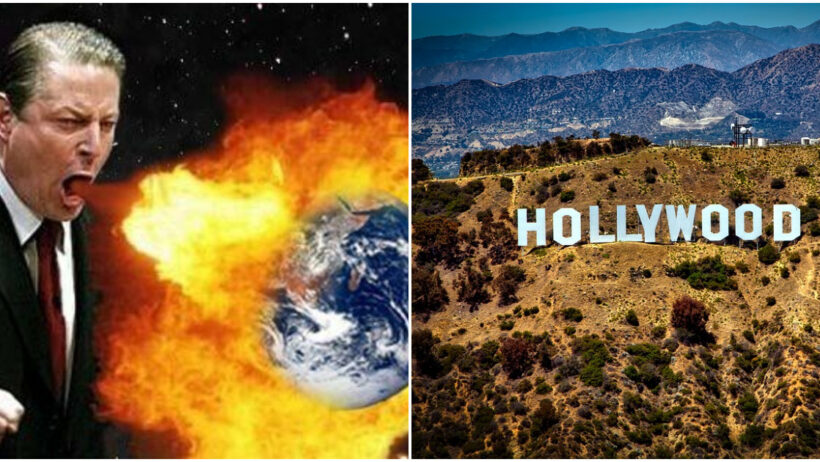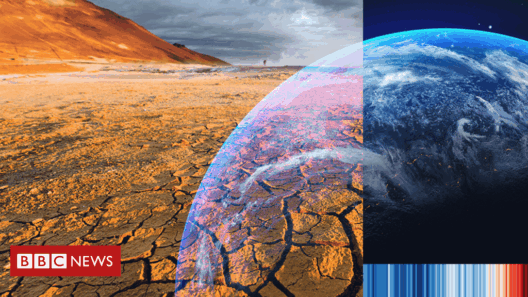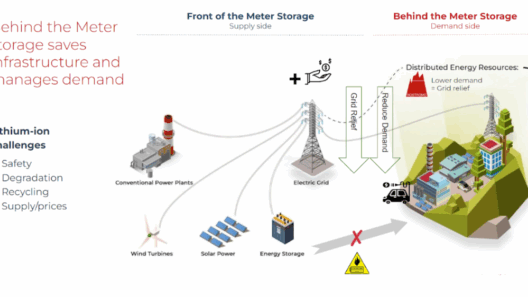Global warming has seeped into the fabric of our culture, influencing literature, art, and notably, cinema. As we journey through the 21st century, movies continue to reflect humanity’s struggle and adaptation to climate change. This raises an intriguing question: What future realities do filmmakers envision, and how accurately do they portray the potential consequences of global warming? In exploring these themes, we encounter a fusion of creativity and factuality, as fantastical projections sometimes collide with scientific predictions.
One cannot deny the potency of film as a medium to provoke discussion. From documentaries to fictional narratives, cinema has a unique ability to stir the audience’s emotions, driving them toward ecological consciousness. But does it succeed in presenting a plausible future? Let’s delve into the filmic depictions of our warming planet, assessing both their veracity and their pitfalls.
Essentially, the underlying narrative of many films is that humanity’s actions hold vast implications for our planetary health. Documentaries like “Before the Flood” present a kaleidoscopic harmony of alarming statistics and emotional storytelling, advocating for immediate action against climate change. Such works equip viewers with vital knowledge regarding the dire state of our environment, meriting commendation for their educational value.
Conversely, fictional films like “The Day After Tomorrow” and “Snowpiercer” exhibit a sensationalistic approach. They sensationalize climate-related catastrophes, often distorting scientific principles. Such films amplify a culture of fear—proposing apocalyptic scenarios that may distort public perception and engender hopelessness rather than inspire tangible action. Still, they resonate powerfully with audiences, reflecting a common angst that reality might spiral out of control.
An underlying critique of climate films is their propensity for oversimplification. Many narratives hinge on the archetype of the hero battling a monolithic evil—the looming specter of climate devastation. Consider the character-driven narrative arcs, which often depict a lone protagonist or a band of heroes combating an unmistakable adversary. This simplistic binary fails to encapsulate the complexities of climate issues, which are multi-faceted and deeply ingrained in societal frameworks.
Let’s explore another dimension: the imagination featured in speculative films. Movies such as “Interstellar” explore not only the impacts of climate change but also the possibility of human survival beyond Earth. While these narratives delude themselves in technocratic optimism—offering space travel as a solution to ecological collapse—they prompt crucial dialogues about technological dependence and ethical considerations in the face of impending crises. Could the humanity of tomorrow become so engrossed in futuristic aspirations that they neglect earthly stewardship? This question challenges us to ponder whether we are merely postponing accountability.
Moreover, the depiction of climate refugees in films presents a compelling aspect of this narrative. Movies like “The 100” showcase societies in dystopian settings impacted by agricultural collapse and resource scarcity, leading to intense social fragmentation. As temperatures rise, sea levels swell, and weather patterns become common harbingers of chaos, the existence of climate refugees will, no doubt, become a salient issue. While these films grapple with societal consequences and human resilience, they often fail to portray the nuanced realities of migration, conflict, and displacement.
Additionally, the implicit notion that climate change is an abstract future outrageously distances us from the immediacy of current environmental injustices.
The cinematic lens provides a rich tableau on which to evaluate not just individual films, but societal narratives at large. Countless cinematic stories portray nature as either a benevolent force or a vengeful antagonist. Take “Avatar,” for example. It prompts audiences to reconsider humanity’s relationship with the Earth, promoting a symbiotic view of existence. This interpretation is vital as it rekindles indigenous wisdom regarding nature—suggesting that stewardship is superior to exploitation. However, the simplistic rendering of conflict may mislead contemporary viewers navigating global environmental issues. Are we, collectively, failing to learn from indigenous practices when we present nature solely as a backdrop of dramatic endeavor?
Furthermore, it’s essential to challenge the idea that film can serve as a panacea for climate activism. While filmmakers spark discourse and inspire action through engaging storytelling, reliance on cinematic narratives can create passive spectators rather than active participants. The rise of online platforms and grassroots movements shows that real change arises from collective action. Thus, how can we ensure that the climate revolution extends beyond the silver screen into our daily lives and communities? This impels us toward the responsibility of translating cinematic inspiration into meaningful environmental stewardship.
The question persists: As we navigate an increasing number of climate-centric films, how can we discern the thin line between alarmist fiction and constructive reality? It is prudent to cultivate a critical mindset regarding the portrayals of environmental challenges in cinema. Engaging constructively with visual narratives while promoting scientific literacy can lead to a potent synergy between art and activism. The ultimate challenge lies in harnessing the emotional power of cinema to galvanize action, while simultaneously empowering audiences with actionable knowledge and hope for tangible change.
In summary, exploring “A New World After Global Warming” through the lens of cinema reveals both triumphs and shortcomings. While films hold the power to ignite awareness and empathy, they must reckon with accuracy and complexity. As we journey forward into an uncertain future framed by global warming, the challenge lies in mustering the narrative power of cinema, balancing the allure of dramatization with a commitment to truth, adaptation, and change. If humanity can temerariously embrace the lessons couched in our screen stories, perhaps the next act will culminate not in despair but in a harmonious coexistence with our planet.







